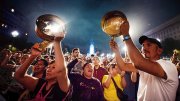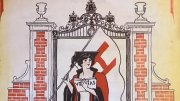In his gift to Red Sox fans, Feeding the Monster: How Money, Smarts, and Nerve Took a Team to the Top (Simon & Schuster, $26), Seth Mnookin ’94 offers this take on why the announcement in 2000 that the team was up for sale so energized the Boston citizenry, some of whom worried that a new owner might move the team out of town:
Interest in the Red Sox’s sale was greatly enhanced by both the team’s unique place in New England’s collective unconscious and an escalating sense of anxiety about Boston’s national identity. By 2001, Boston, which for much of the nineteenth century had thought of itself as the most important city in the country, had been almost entirely transformed into a second-tier metropolis. As recently as the 1980s and 1990s, there were still a number of prominent national companies based in the area…. [But even] Jordan Marsh, the venerable Boston department store that had been founded in the mid-nineteenth century, was acquired by (and eventually rebranded as) the New York-based Macy’s. [Former Harvard vice president] Paul Grogan, the president and CEO of The Boston Foundation, a community group dedicated to “building and sustaining a vital, prosperous city and region,” acknowledged what was becoming the unavoidable truth when he said, “You find yourself in more and more conversations where people are referring to Boston as a branch office town.” Such a designation was devastating for Bostonians, who prided themselves on their sophistication and urbanity and desperately wanted to think of their hometown as an international attraction on par with London, Paris, or Rome. Boston, the branch office town? It was an embarrassing thought.
By the new millennium, it was becoming more and more of a reality.…The region still had a robust bio-tech industry and the most impressive collection of universities in the country…but compared to the glitz and glamour of Los Angeles, the power of Washington, the sheer breadth of Chicago, and, of course, the omnipotence of New York City, Boston had a hard time stacking up.
But none of those other cities could boast the Red Sox. The Sox weren’t baseball’s most storied or successful franchise, but they were its most interesting, and certainly had the most intimate and intense connection with their fans. Beginning with the Impossible Dream season of 1967 and escalating in the mid-1970s, they’d grown into America’s most popular baseball team.…
[Down in New York, lead owner George] Steinbrenner’s spending sprees brought the Yankees success, but it also turned the team into an emblem of all that was wrong with baseball, and for that matter, America. In an era in which fans were just getting used to players being allowed to switch teams freely, the Yankees were seen as being all too willing to use their money to create an unfair advantage. The Red Sox, as New York’s perennially struggling rivals, became the team the rest of the country could root for. They were steeped in romance and tradition, and their losses were proof of life’s tragic nature.…
By the end of the century, Boston might not have been a world-class city, but the Red Sox were considered a world-class team….





